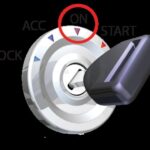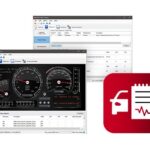The world of automotive diagnostics has come a long way. Early systems, known as OBD1, laid the groundwork, but On-Board Diagnostics II (OBD2) is the standard we see in most modern vehicles today. For owners of classic cars still running OBD1, the question often arises: is it possible, or even worthwhile, to convert to OBD2? This question was recently posed by a user with a ’91 Toyota MR2 looking to enhance their car’s monitoring capabilities and tap into modern track day tools. Let’s dive into the complexities of converting from OBD1 to OBD2 and explore whether it’s the right path for your vintage vehicle.
Is Swapping to OBD2 Achievable?
The short answer is: yes, technically, converting an OBD1 system to OBD2 is possible. However, it’s far from a simple plug-and-play upgrade. As many experienced voices in the car enthusiast community point out, it’s often a “significant headache”. The level of difficulty largely depends on your specific vehicle and your goals for the conversion.
For some vehicles, particularly those where an OBD2 version of the same engine exists, the process can be less daunting. One forum contributor shared their experience with a VW Corrado, where swapping in the OBD2 engine wiring harness, ECU, and related sensors from a later model VR6 car was a manageable, albeit involved, project. This kind of swap usually requires meticulous work with wiring harnesses and ensuring compatibility between the OBD2 ECU and your older vehicle’s systems.
What Parts Are Needed for an OBD1 to OBD2 Conversion?
If you’re considering tackling an OBD1 to OBD2 conversion, be prepared for a potentially extensive parts list. Based on discussions among car experts, here are some key components you’ll likely need:
- OBD2 Engine Wiring Harness: This is crucial as it integrates the necessary wiring for OBD2 sensors and the ECU.
- OBD2 ECU (Engine Control Unit): The brain of the OBD2 system, it’s responsible for interpreting sensor data and managing the engine.
- OBD2 Sensors: This can include a variety of sensors like MAF (Mass Air Flow), rear O2 sensors, and potentially others not present in OBD1 systems.
- Throttle Body and Intake Manifold: In some cases, these components might need to be swapped to ensure compatibility with OBD2 sensors and systems.
- OBD2 Diagnostic Port: Naturally, you’ll need the physical OBD2 port to connect diagnostic tools and scanners.
However, the parts list can quickly expand depending on the vehicle. You might encounter issues with:
- Sensor Compatibility: OBD2 systems often use different types or numbers of sensors compared to OBD1.
- Reluctor Rings and Sensor Mounting: As one experienced mechanic noted, changes in reluctor ring designs (magnetic to optical, tooth count variations) and sensor mounting points can present unexpected hurdles.
- Injector Impedance: Differences in injector impedance between OBD1 and OBD2 systems need to be addressed.
- Additional Sensors: OBD2 systems may require sensors that your OBD1 setup simply doesn’t have provisions for.
Challenges and Drawbacks of OBD2 Conversion
While technically feasible, converting to OBD2 comes with significant challenges that might outweigh the perceived benefits for many classic car owners:
- Complexity and Labor: The conversion is not a straightforward task. It often involves extensive wiring modifications, parts sourcing, and potential fabrication work. For some cars, it might even require dashboard removal to access and replace the entire wiring harness.
- Cost: Sourcing all the necessary OBD2 components, especially if you need to find a donor car or specific parts, can become expensive. The labor involved, if you’re not doing it yourself, will add to the cost.
- Limited Benefit for Performance Data: While OBD2 offers standardized diagnostics, the basic OBD2 data logging frequency, particularly in pre-CAN bus systems, is quite slow. For detailed performance monitoring needed for track days, basic OBD2 might be insufficient. As experts point out, the data rate can be as low as 4 data values per second, which is inadequate for capturing fast-changing parameters like throttle position and RPM with high fidelity.
- Emissions Focus: A significant part of OBD2’s design is for emissions monitoring. If your primary goal is performance data logging, the emissions-related aspects of an OBD2 conversion might be unnecessary complexity.
- Vehicle-Specific Issues: The availability of compatible OBD2 parts varies greatly. For some classic cars, like the ’91 MR2 mentioned initially, there might not be a readily available OBD2 version of the engine or car to source parts from, making a direct conversion exceptionally difficult.
Better Alternatives to OBD2 for Classic Cars
Considering the complexities and potential drawbacks, are there better ways to achieve enhanced monitoring and data logging for your OBD1 classic car? Fortunately, yes. Several alternatives offer more practical and often more powerful solutions:
- Standalone ECUs: For performance enthusiasts seeking comprehensive control and data, standalone Engine Control Units (ECUs) are often the preferred route. Brands like Megasquirt, Haltech, and Speeduino offer systems that replace your factory ECU and provide extensive tuning and data logging capabilities. These systems often offer significantly higher data rates and CAN bus communication, which is ideal for track day data analysis. Some are even designed as plug-and-play solutions for specific classic car engines.
- OBD1 Datalogging Solutions: Don’t dismiss OBD1 entirely! Solutions exist to tap into the data available from your OBD1 system. Tools like ALDLdroid and Arduino-based OBD1-to-Bluetooth converters, combined with apps like Torque Pro, can allow you to monitor and log data from your OBD1 ECU on modern devices. These often require ADX/ALDL files specific to your vehicle to properly translate the data.
- Dedicated Data Acquisition Systems: For serious track enthusiasts, dedicated data acquisition systems offer the highest level of performance. These systems often use standalone sensors and CAN bus communication for high-speed, multi-channel data logging, including parameters beyond engine data like braking force, steering angle, and GPS position.
The Verdict: Is OBD2 Conversion Right for You?
Converting from OBD1 to OBD2 is a significant undertaking. While technically possible, it’s often a complex, costly, and potentially less effective solution compared to modern alternatives, especially if your primary goal is performance data logging.
For classic car owners seeking enhanced engine management and data capabilities, exploring standalone ECUs or leveraging existing OBD1 datalogging solutions are often more practical and rewarding paths. These options can provide the data and control you need without the extensive work and potential headaches of a full OBD2 conversion. Before jumping into an OBD2 swap, carefully consider your goals, budget, and the specific challenges related to your vehicle. You might find that embracing modern technology designed for performance, rather than chasing a factory diagnostic standard, is the better upgrade path for your classic ride.

